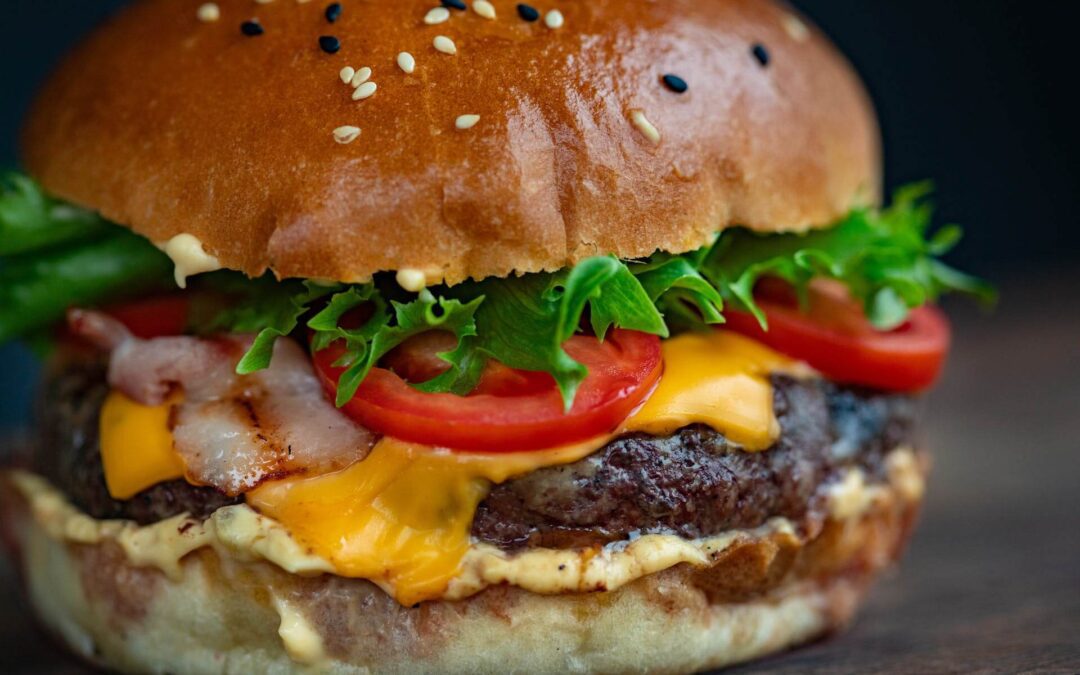If you want to improve your health, look first to nutrition. The proper diet can help you lose weight, boost your energy, improve your appearance, and lower your risk of chronic disease.
What’s the proper diet for you? That depends on your health goals and food proclivities.
Today you’ll learn about two popular weight loss diets: the keto and the South Beach Diet. By the end of the article, you should have enough information to decide about them.
What Is the Keto Diet?
The ketogenic (or “keto”) diet is a low-carb, high-fat diet in which you consume around 60% of your calories as fat, 30% as protein, and 10% as carbs. Maintaining these ratios of fat, protein, and carbohydrates eases you into a unique metabolic condition called ketosis.
In ketosis, your cells burn (or beta-oxidize) fat to form chemicals known as ketones. As a result, these ketones offer energy to your cells, particularly your brain cells [1].
Usually, your cells get their energy from sugar (glucose). However, in ketosis, your body exits the blood sugar roller coaster and boards the calm, steady fat train.
Carb restriction is essential for achieving this fat-burning state. This is because when you limit your carbohydrate consumption, your blood sugar remains stable. And low blood sugar implies less insulin (the hormone that regulates your blood sugar) is released [2].
Consider low insulin the ketosis bat signal: more fat burning, less insulin.
Ketone levels may be measured using blood or urine test strips to ensure you’re on track with keto. The keto diet is the only one that allows you to track your progress using a particular biomarker.
According to research, the keto diet can assist with weight reduction, diabetes, appetite, brain health, inflammation, and other issues.[3][4][5][6][7].
Keto-Friendly Foods To Eat:
- Healthy fats include butter, lard, olive, coconut, avocado, heavy cream, and macadamia nut oil.
- Almonds, pistachios, walnuts, cashews, and macadamia nuts are examples of nuts.
- Animal protein, fatty fish protein, whey protein, and vegan protein powder are all examples of proteins.
- Vegetables that are high in fiber and low in carbohydrates that are not starchy
- A few low-carb fruits, such as berries, lemons, and limes
Foods To Avoid On Keto:
- Grain, starchy vegetables, and most fruits are high in carbohydrates.
- Anything containing extra sugar
- Foods that have been refined, such as industrial seed oils
See this comprehensive ketogenic diet food list for a complete list of keto-friendly foods.
What Is The South Beach Diet?
In 2003, cardiologist Arthur Agatston released “The South Beach Diet: The Delicious, Doctor-Designed, Foolproof Plan for Fast and Healthy Weight Loss.” Agatston drew the guidelines of the South Beach Diet in the book, making various health claims (mainly about weight loss) along the way.
The South Beach Diet plan limits processed carbohydrates (such as sugar) but is not a low-carb diet. The emphasis is on lean protein, monounsaturated and polyunsaturated fats, and low-glycemic, or “good,” carbohydrates.
Low-glycemic refers to the glycemic index, which measures how much a particular item raises blood sugar. Sugar and processed carbohydrates have a high glycemic index, but fiber, vegetables, and grains have a lower index.
But here’s the catch. Because different people respond differently to the same diet, the glycemic index is challenging to trust [8].
South Beach Diet Phases
The South Beach Diet is divided into three stages, each less restrictive than the last.
- Phase 1: Eat lean protein, monounsaturated and polyunsaturated (but not saturated) fats, almonds, avocados, and low-carb vegetables throughout Phase 1. Almost all carbohydrates are avoided, including fruit juice, alcohol, entire grains, and fruit. The first phase lasts two weeks.
- Phase 2: Continue with Phase 1 meals while reintroducing healthy grains, starchy veggies, and fruits. Continue in Phase 2 until you reach your weight loss goal.
- Phase 3: This “maintenance phase” permits all meals in moderation. However, it would help if you remained with the standard Phase 2 arrangement.
What Do Keto and South Beach Have In Common?
Both keto and South Beach are weight loss regimens with at least two similar methods. Continue reading.
#1: No sugar
Sugar intake is a significant contributor to obesity in the United States. Sugary beverages, sports drinks, and fruit juices are causing obesity [9].
Added sugar is prohibited on the keto diet and stages 1 and 2 of the South Beach Diet. Phase 3 is more permissive and allows for the odd sugar hit.
#2: Moderate protein
Protein is not a nutrient that can be skipped. Protein is required for muscle maintenance, neurotransmitter production, and many other functions.
Low-protein diets have been associated with sarcopenia or age-related muscle loss [10]. Sarcopenia is a poor sign. Lower quality of life, reduced functional strength, fragility, and other symptoms.
Both the keto and South Beach diets are heavy in protein. Protein accounts for around 30% of your daily calories while following the keto diet. That is about 150 grams on a 2,000 calorie diet.
What’s the Difference Between Keto and South Beach?
You’ve just learned about the similarities between keto and South Beach. You’ll now learn how these diets differ.
#1: South Beach isn’t truly low-carb
Carbs are limited to less than 10% of the total calories on the keto diet. This maintains your blood sugar and insulin levels stable and keeps you in ketosis.
The South Beach diet, on the other hand, does not set strict carbohydrate limits. The initial phase of the diet is relatively low-carb, but as you go through the plan, more carbohydrates are reintroduced.
South Beach, for example, includes whole grains, root vegetables, legumes, and fruits for most of the program. Some foods, such as sweet potatoes, are high in nutrients. Others, such as pasta, bread, and rice, aren’t.
#2: South Beach sanctions grains
Whole grains are divisive. Some people believe they are healthful because they contain fiber. Others say that grains have no place in a healthy diet.
The anti-grain movement makes a compelling case. Whole wheat, for example, has the following nutrients:
- Gluten is a protein found in wheat that causes intestinal harm. This is true even in people who do not have celiac disease, a disorder characterized by gluten autoimmunity [11].
- Wheat germ agglutinin (WGA): Another wheat protein associated with gastrointestinal issues [12].
- Lectins are plant proteins that can cause intestinal damage and immunological issues [13].
- Phytic acid is a plant-based chemical that inhibits nutrient absorption.
However, ancestral diets such as keto and paleo do not include wheat.
#3: Quality of evidence
Keto and South Beach are both promoted as weight loss diets. What does the available evidence suggest?
Not much for South Beach. One study reported that 20 overweight or obese persons lost roughly 11 pounds after 12 weeks of South Beach diets, but no control group existed. Therefore, the findings are suspect [14].
According to another analysis, 67% of the dietary information in the South Beach book “may not be supported by peer-reviewed literature” [15]. That’s the majority of the book!
On the other hand, the keto diet is based on published evidence collected since the 1920s rather than a best-selling book. Numerous randomized controlled experiments indicate that keto can aid with weight loss, appetite management, cognitive improvement, diabetes reversal, and much more [16][17][18][19].
#4: Keto allows saturated fat
Saturated fats like coconut oil and butter are allowed, while polyunsaturated vegetable oils like soybean and peanut oil are not. The South Beach diet takes the opposite stance: saturated fat and vegetable oils are unhealthy.
To begin, saturated fat has been maligned as a risk factor for heart disease, although the facts suggest otherwise. In reality, hundreds of papers were examined in two recent reviews, and no relationship was discovered between saturated fat consumption and heart disease [20][21].
Excessive use of high omega 6 vegetable oils is a different story. Studies believe that the inflammatory effects of vegetable oil intake contribute to America’s obesity problem [22][23].
Even bad is cooking with vegetable oils. When these fats are cooked, they generate oxidized lipids, harmful substances that hasten the onset of heart disease [24]. Saturated fat, on the other hand, is safe to use in cooking [25].
Choosing Between Keto and South Beach
The keto and South Beach diets are superior to the Standard American Diet. Eliminating sugar and processed meals can significantly improve your health.
What is the fundamental distinction between the keto and South Beach diets? Carbohydrates and fats.
While South Beach requires you to limit carbohydrates for two weeks, it is not as low-carb as keto. On South Beach, you won’t be entering ketosis, the metabolic state related to all those health advantages.
South Beach dieters prefer vegetable oils over saturated fats. This is concerning since vegetable oils are associated with inflammation, obesity, and heart disease.
Keto works well for many people but not for everyone. If you want carbs in your life, forgo the South Beach Diet and instead try a Paleo or Mediterranean diet – both whole foods approach consistent with healthy eating.






![How Low Carb and Ketogenic Diets Boost Brain Health [Benefits & Effects]](https://eathealthyisgood.com/wp-content/uploads/2023/11/pexels-ella-olsson-1640773-1-1080x675.jpg)
0 Comments